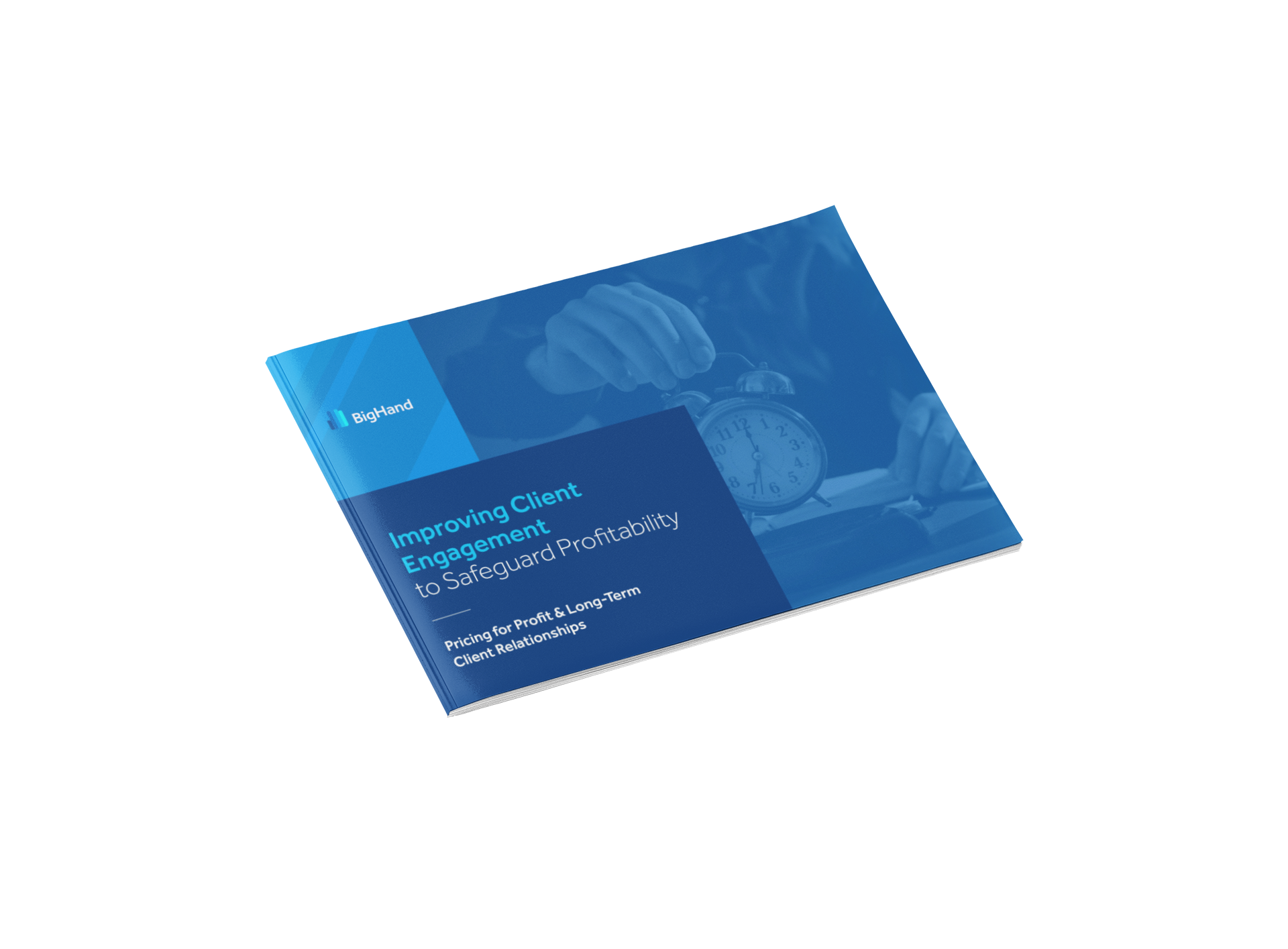Over the past few years, clients’ interest in alternative fee arrangements (AFAs) has become more of the rule and less of the exception. Last year BigHand reported that client demand for AFAs increased 27% since 2019. As clients demand more AFAs, firms require additional resources to improve budgeting, pricing, and matter tracking, providing them with the information to keep clients informed. In the current landscape, clients and law firms must work together as partners. Neither group wants to enter a pricing agreement on a nebulous matter, so conversations between the firm and client should occur as early as possible to guarantee clarity around the scope of the matter. Clients expect accurate pricing and for matters to be on budget, so firms need to consider a few factors before offering different AFAs:
- How predictable or repetitive is the work?
- What is the client’s main concern?
- High rates?
- Staffing efficiency?
- Working efficiency?
- Billing predictability?
- Sharing risk?
Client Expectations are Evolving
In BigHand’s latest Legal Pricing and Budgeting report, half (50%) of NA and 42% of UK firms report experienced clients are demanding more financial transparency, and they are more likely to challenge bills or push back on payments if expectations have not been met. Clients want firms to be open with them about what is happening with matter budgets and the progress being made. They expect immediate communication that delivers transparent customer service from the firm, including what deliverables were accomplished during the billable time they are charged for, and to be provided with an itemized list that helps them understand the progress that was made. Historically, this had not been happening, and clients were left in the dark and faced sticker shock when they received bills surpassing the budget. This is not only detrimental to the client relationship but could also lead to the loss of the client. Furthermore, this also often results in write-offs for the firm, impacting profitability. To meet clients’ budgeting and pricing needs and to provide the level of transparency they require is challenging. Even after building a team with the right talent, tools and technology are critical for success.
Providing Clients with Greater Value
Firms are pricing and tracking more matters each year, and as demand grows, firms are turning to technology solutions to both manage the increased demand and to improve client satisfaction. With the right solution, budgets can be created quickly, easily, and confidently by referencing or reproducing trends in past matters. In my experience, matters with budgets tend to have a realization 10-15% higher than those without, so facilitating matter budgeting improves realization and firm profitability. After investing the time to develop an accurate budget and agree on pricing, clients want to know when and how they will hear from the firm about the progress of the matter, as well as the downstream impact of changes. However, the report also uncovered that only 1.5% of NA and 3.2% of UK firms provide budget updates throughout the project lifecycle on all matters. Consistent communication, whether it be based on matter milestones, timeframe, dollar value of worked fees, % of work completed, phase or task, etc., builds trust with the client, helps them feel comfortable and have confidence in the work, and gives the firm an advantage against competitors.
It can be difficult for pricing teams to meet this growing need from clients, and technology can help automate or streamline matter tracking to facilitate conversations between attorneys and clients. This not only helps manage client expectations to help minimize write offs and maximize profitability, but also provides the firm with insight into matters. When a firm can track and measure progress on a budget, it’s able to manage it for more profitable matters, and that information can be used to help project fees and work on future matters, as well as determine which AFAs might be most appropriate or successful for a type of work.
The importance of financial visibility is evolving, and firms need to adapt their pricing models to continue to be profitable. To learn more on how to improve client engagement to safeguard profitability download a copy of the latest report: Improving Client Engagement to Safeguard Profitability.








